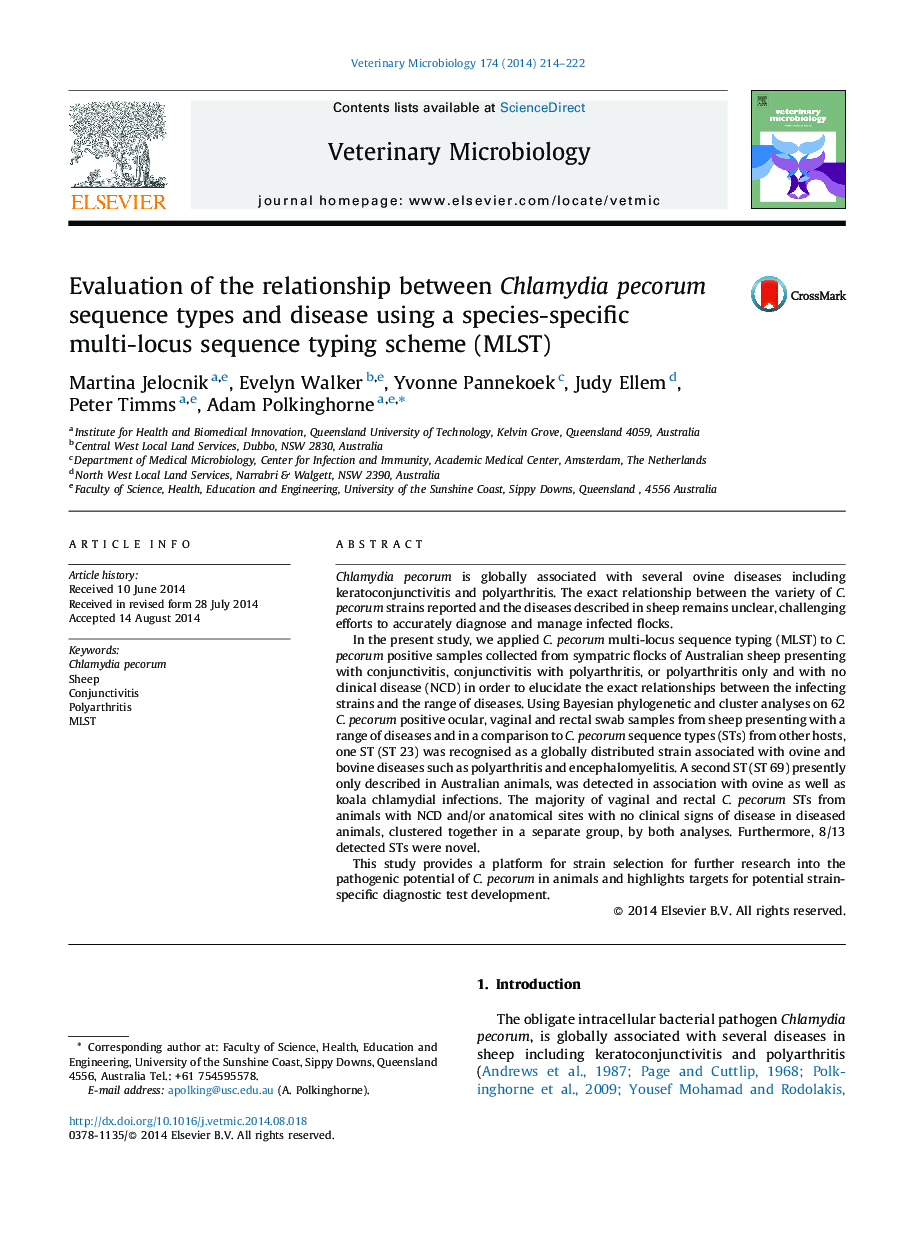| کد مقاله | کد نشریه | سال انتشار | مقاله انگلیسی | نسخه تمام متن |
|---|---|---|---|---|
| 5800568 | 1555356 | 2014 | 9 صفحه PDF | دانلود رایگان |

- Molecular typing reveals a link between Chlamydia pecorum strains and disease.
- ST 23 'pathotype' was found in association with diseases in sheep and cattle.
- A second 'pathotype' was described only in Australian sheep but also in koalas.
- Rectal and vaginal strains clustered into a separate 'non-pathotypic' group.
Chlamydia pecorum is globally associated with several ovine diseases including keratoconjunctivitis and polyarthritis. The exact relationship between the variety of C. pecorum strains reported and the diseases described in sheep remains unclear, challenging efforts to accurately diagnose and manage infected flocks.In the present study, we applied C. pecorum multi-locus sequence typing (MLST) to C. pecorum positive samples collected from sympatric flocks of Australian sheep presenting with conjunctivitis, conjunctivitis with polyarthritis, or polyarthritis only and with no clinical disease (NCD) in order to elucidate the exact relationships between the infecting strains and the range of diseases. Using Bayesian phylogenetic and cluster analyses on 62 C. pecorum positive ocular, vaginal and rectal swab samples from sheep presenting with a range of diseases and in a comparison to C. pecorum sequence types (STs) from other hosts, one ST (ST 23) was recognised as a globally distributed strain associated with ovine and bovine diseases such as polyarthritis and encephalomyelitis. A second ST (ST 69) presently only described in Australian animals, was detected in association with ovine as well as koala chlamydial infections. The majority of vaginal and rectal C. pecorum STs from animals with NCD and/or anatomical sites with no clinical signs of disease in diseased animals, clustered together in a separate group, by both analyses. Furthermore, 8/13 detected STs were novel.This study provides a platform for strain selection for further research into the pathogenic potential of C. pecorum in animals and highlights targets for potential strain-specific diagnostic test development.
Journal: Veterinary Microbiology - Volume 174, Issues 1â2, 7 November 2014, Pages 214-222